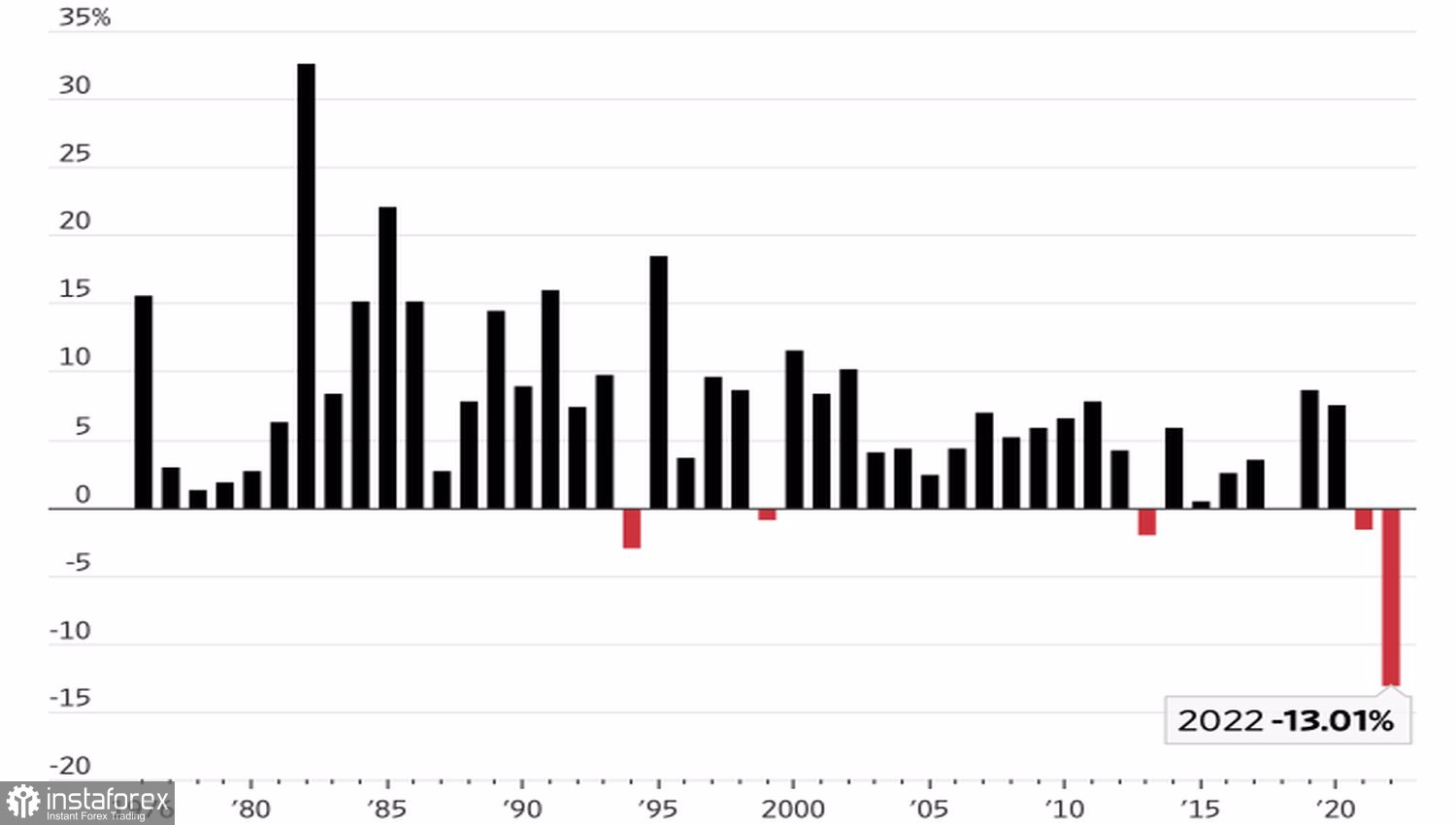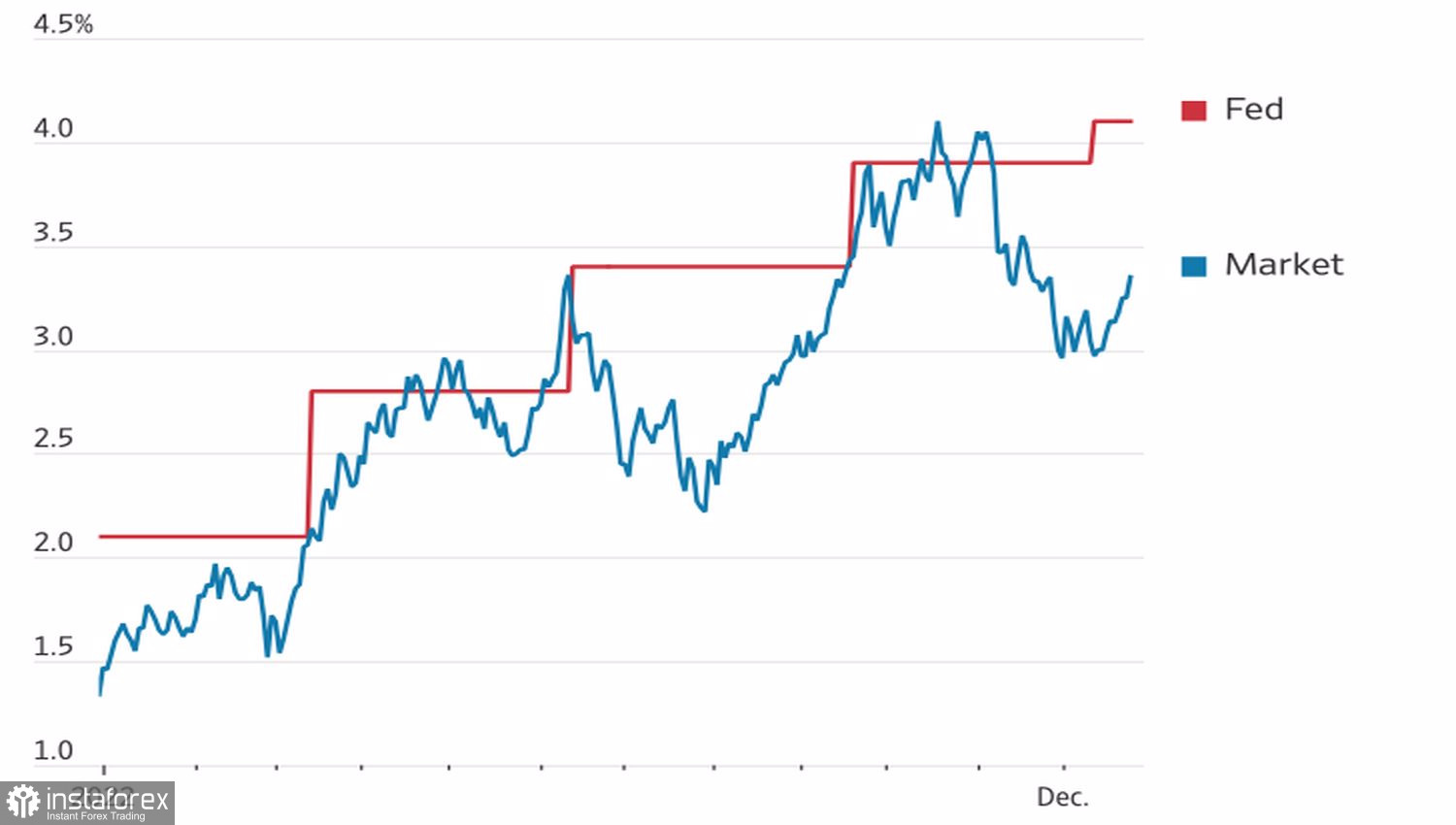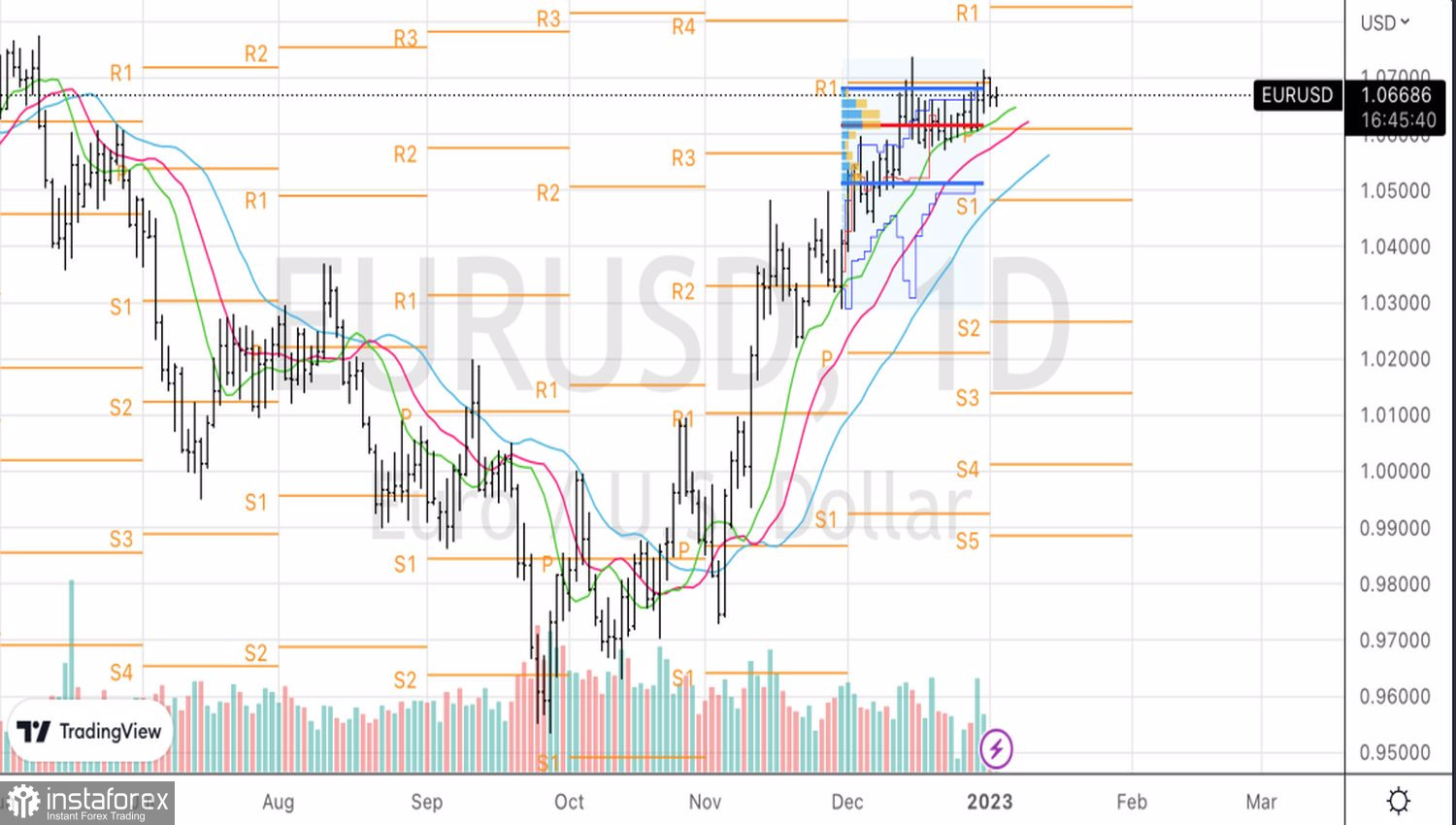The conflict of interest between markets and the Fed became the hallmark of 2022, and it could reach its climax in 2023. Many investors suffered losses last year when they thought they could outsmart the Federal Reserve. The S&P 500 tumbled by 19%, while Bloomberg's US Aggregate bond index dropped by 13% in its worst yearly performance since the index's inception in the 1970s. Nevertheless, the markets showed signs of a rebound in the fourth quarter. Who will come on top, and how will it affect EUR/USD?
Bond index performance

Despite the best efforts of Jerome Powell and his colleagues, the gap between investor opinion and the Fed's opinion is not narrowing. According to the FOMC outlook, the federal funds rate will reach 5.1% by the end of 2023, while the Fed funds futures market sees it at 4.6%. The 50 bps divergence is less than that in 2024. By the end of 2024, the Federal Reserve expects interest rates to reach 4.1%, while the CME FedWatch tool predicts it would fall to 3.4%.
If the market is right, this will create significant upside potential for both stocks and bonds. Their rally, including lower bond yields, which move in the opposite direction from the price, will support the EUR/USD uptrend. But what if the Fed is right? Continued aggressive monetary tightening would strike a serious blow to the stock market and could result in the S&P 500 having a second consecutive year of losses. This has only happened four times since 1928. In such a scenario, the US dollar would get stronger.
Fed outlook on interest rates and market expectations

Notably, primary dealers, major banks that work directly with the Fed, believe market forecasts are correct. Most of their outlooks see the US central bank hike the interest rate in the first quarter, hold it in Q2, and reduce the rate in Q3 or Q4. Its monetary policy would take into account the recession caused by the Fed's earlier actions. More than two-thirds of the economists at 23 large financial institutions polled by the Wall Street Journal expect the US economy to enter a recession in 2023, with two predicting the downturn to happen in 2024 instead. Previously, the Fed increased the rate 7 times from 0.25% to 4.5% in 2022, and it is set to continue its rate hike cycle in 2023. In December. In its outlook last month, the FOMC forecasted rates to rise to 5-5.5%.
However, primary dealers see a weak recession in the new year and expect the economy to recover in the second half of the year thanks to the Fed's dovish pivot.

Therefore, the confrontation between the markets and the central bank is far from over, and the outcome will determine the trajectory of many financial assets.
From a technical standpoint, an inside bar has been formed on the EURUSD daily chart, which indicates uncertainty. If the pair breaks through its upper boundary near 1.07, the risks of a renewed downtrend will increase. Alternatively, a successful breakout of the lower boundary at 1.065 would trigger a correction and provide an opportunity for opening short position in the short term.





















